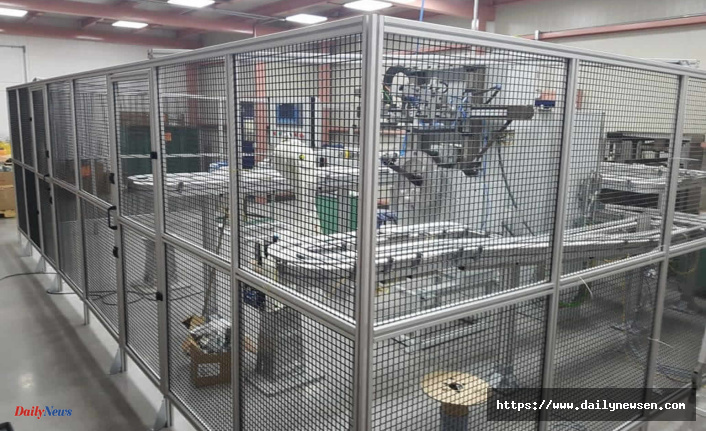The band saw guards represent more than just a protective barrier; they symbolize the evolution of safety measures from reactive responses to proactive solutions. The industrial sector has witnessed significant advancements in safety protocols, with the band saw guard emerging as a cornerstone in the modernization of equipment safety. Designed to mitigate the risks connected with operating band saws, such as cuts, amputations, and exposure to debris, band saw guards are an indispensable component of workplace safety. As this article unfolds, it will dive deeper into several benefits of saw guards, not only in safeguarding operators from physical harm but also in enhancing compliance with safety standards, boosting operational efficiency, reducing financial liabilities, and nurturing safety-centric workplace culture. This comprehensive exploration aims to underscore the critical role that saw guards play in fostering a secure and productive working environment.
Enhancing Operator Safety
The advent of saw guards has marked a significant leap forward in operator safety, offering robust protection against the myriad hazards of working with band saws. These devices prevent direct contact with the blade and minimize exposure to airborne particles and noise, contributing to a healthier work environment. The strategic design of saw guards allows for adjustments to fit various types of saws and applications, ensuring that protection does not compromise the quality of work. By encompassing a broad spectrum of safety concerns, sawguards provide a holistic approach to protecting workers, affirming their indispensable role in modern industrial practices.
Compliance with Safety Regulations
Saw guards stand at the intersection of safety innovation and regulatory compliance, serving as a testament to a company's adherence to national and international safety standards. Implementing these guards is a proactive measure that aligns with the stringent requirements of safety oversight organizations. This alignment not only underscores a business’s commitment to the well-being of its workforce but also establishes a framework for continuous improvement in safety practices. As regulations evolve to incorporate the latest safety technologies, the role of saw guards in ensuring compliance becomes increasingly pivotal, positioning them as a key component of a comprehensive safety management system.
Improving Operational Efficiency
Integrating saw guards into the workflow transcends traditional safety measures, offering tangible benefits in operational efficiency. The confidence these protective devices instil enables operators to focus on their tasks with greater precision, lowering the likelihood of errors that could lead to costly rework. Additionally, the modern design of saw guards facilitates ease of installation and maintenance, ensuring that safety protocols do not impede productivity. This seamless integration of safety and efficiency exemplifies the dual role of saw guards in enhancing workplace operations while maintaining the highest safety standards.
Reducing Insurance Premiums and Liability
The financial implications of incorporating saw guards into industrial equipment are multifaceted, extending beyond the initial investment in safety technology. By demonstrably reducing the risk of workplace accidents, these guards can significantly lower insurance premiums, offering a return on investment that resonates through the company’s bottom line. Furthermore, in the litigious landscape of modern business, saw guards can serve as a critical defense in mitigating liability, showcasing a company's proactive stance on safety. This financial prudence and a commitment to safety highlight the strategic value of saw guards in managing risk and safeguarding assets.
Cultivating a Safety-First Workplace Culture
The installation of saw guards is a tangible expression of a company’s dedication to creating a safe working environment, serving as a cornerstone in cultivating a safety-first culture. This commitment extends beyond the mere compliance with regulations, permeating every aspect of the workplace ethos. By prioritizing safety in tangible ways, companies can foster an environment where workers feel valued and protected, enhancing morale and loyalty. The ripple effects of this culture can extend to attracting top talent and maintaining a positive image in the industry, underscoring the integral role of sawguards in shaping the identity and values of a company.
Role of Technological Advancements in Safety Equipment
The continuous evolution of safety equipment, underscored by technological advancements, plays a critical role in enhancing the effectiveness of saw guards. Innovations such as automation, sensor technology, and IoT integration have paved the way for saw guards that prevent accidents and monitor operational conditions in real-time. These advancements facilitate immediate responses to potential hazards, reducing the risk of injury. As technology advances, the potential for developing smarter, more adaptive saw guards offers a promising horizon for workplace safety, ensuring that protective measures keep pace with the complexities of modern industrial operations.
Conclusion
Reflecting on the comprehensive benefits of a band saw guard, and it is evident that their impact extends far beyond the immediate safeguarding of operators. These protective devices embody the convergence of safety, efficiency, regulatory compliance, financial savvy, and cultural integrity in the modern workplace. As the industrial landscape evolves, adopting and advancing saw guard technology becomes increasingly paramount. By embracing these innovations, businesses can navigate the challenges of maintaining a safe, productive, and compliant workplace, ensuring that the well-being of their workforce remains at the forefront of their operational priorities.












